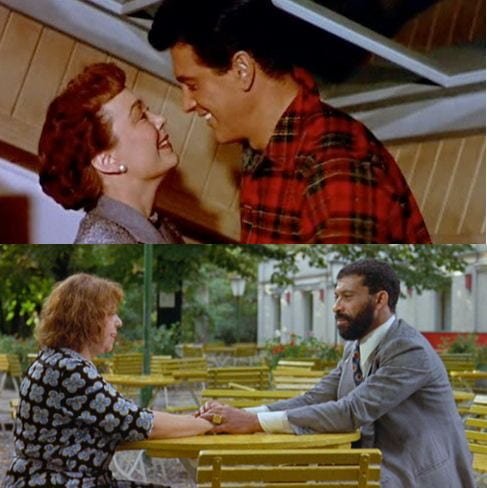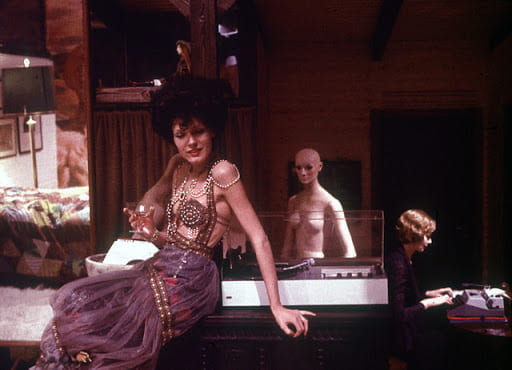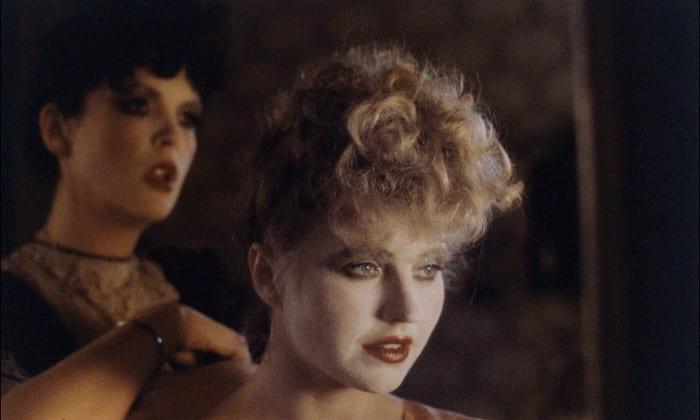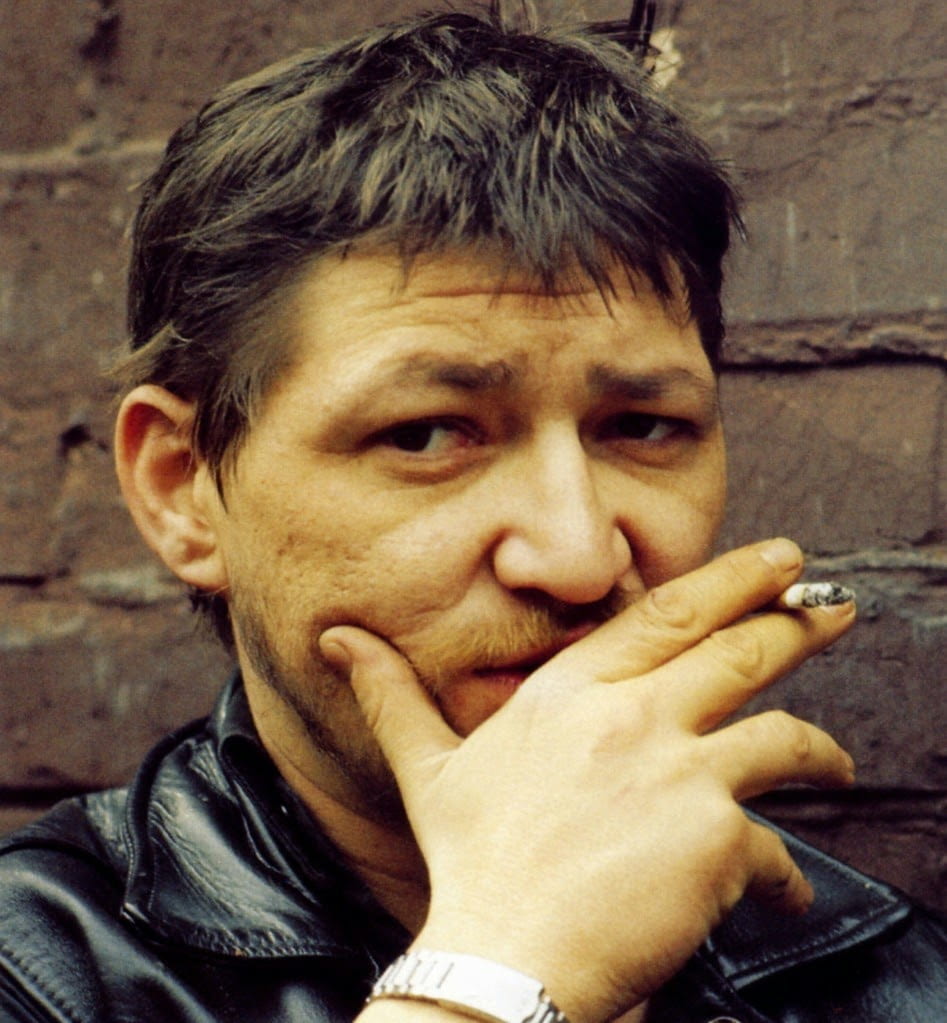
Much has been made of Rainer Werner Fassbinder’s relationship with the great Hollywood auteur Douglas Sirk, and of Fassbinder’s predilection toward working within a mode of overwrought melodrama – the kind of “weepies,” largely intended for female audiences, that Sirk was most comfortable working with in the ‘50s. Those who study Fassbinder have even come to identify a kind of “Sirk period” in his work, spurred on by his viewing of six Sirk films at the Filmmuseum in Munich toward the end of 1970, which culminated in Ali: Fear Eats the Soul (1974), a remake of sorts to Sirk’s masterpiece All That Heaven Allows (1955).
But equally important to an understanding of Fassbinder’s art is his background in German experimental theatre: his first great hero remained the dialectical playwright Bertolt Brecht (1898-1956), and even his most overtly Sirkian texts seem to practice a form of theatrical distanciation which Brecht helped to formulate. In this regard, there might be said to be a kind of tension in Fassbinder’s work between a broadly accessible strain of melodrama (which itself has ties to a kind of nineteenth-century sentimentalism, with its direct appeals to emotion) and a more chilly or experimental strain of modernism, which is primarily conveyed to us through the distancing effects present in Fassbinder’s ideas about mise-en-scene. Surprisingly, this unsettling break between camera technique and the kind of script that it’s being applied also resembles Sirk’s own stylistic preoccupations — both filmmakers seem to hover above their own material in various ways, positioning themselves in a mysteriously incoherent authorial space.

These tendencies toward a kind of unrelenting artifice may be observed in The Bitter Tears of Petra von Kant (1972), one of Fassbinder’s greatest works, and perhaps the one which bares the traces of theatrical trappings most strongly: Fassbinder confines the entirety of its narrative action to a single set. Petra relays a kind of sexual power play between three women (played by regular Fassbinder collaborators Margit Carstensen, Hanna Schygulla, and Irm Hermann) in a glamorously decorated apartment. The latent masochism and traumatic emphases of the material at times resemble something akin to Hitchcock’s Marnie (1964), but Fassbinder’s approach could not be more different: gone is the sublimely interactive play of subjective and objective compositions present in much of late Hitchcock, replaced here by a series of meticulously staged tableaux shots. Fassbinder’s delicacy of form here possesses a painterly, almost Vermeer-like quality. Layers of harsh stylization – frames within frames, mannequins mirroring the poses of the actors – seem to obscure us from the characters’ psychic motivations, leaving behind only the tumultuous exterior of action between figures; melodrama becomes a kind of skeleton.

In The Marriage of Maria Braun (1979), the first entry in his arthouse “BRD trilogy” about women living in postwar Germany, Fassbinder dials up the abstraction even further, grounding these Brechtian devices more intensely in physical objects and décor. One of my favorite examples of this technique comes during a scene of Herrman (Klaus Lowitsch), Maria’s (Hanna Schygulla) husband and first lover, in prison after taking the rap for manslaughter on behalf of Maria. Although this scene carries an important narrative function in the film, and despite the fact that Herrman remains a complicated, fascinating character, Fassbinder films the scene in a way which becomes problematic for any sense of identification or textual interpretation that we as viewers might naturally try to form. He directs the entire sequence in a spacey low angle shot, and foregrounds the prison guard’s keys jangling in front of Hermann. These strange compositional ideas assume a kind of awesome, cumulative power in the film, gradually corroding the sometimes obvious, broadly melodramatic emphases of the script. As with the ghostly, sculptural chambers of Petra, these distancing effects serve to heighten the importance of physical gesture in the film. Fassbinder’s deliberately choreographed, nearly Ophulsian handling of the movements between various characters dancing at a birthday party remains a perfect example of this.

Although Fassbinder is often remembered for his “depressing” character studies (as Gary Indiana once wrote in Artforum, “If a character’s happy [in a Fassbinder film], he or she hasn’t yet heard the bad news”), as well as for his affinities with the matinee weepie format, his astonishing creativity at the level of form remains an equally important aspect of his legacy. Fassbinder, like Sirk, seemed to work out his ideas most clearly through moving images – and this may be observed both in his rigorously composed, somewhat conservative sense of “mise-en-scène” (both in a theatrical and filmic sense), as well as in the special, ultimately unknowable status he accords to static objects. In this regard, he’s one of the very few artists I’d call a total filmmaker: the textual richness and idiosyncrasies of his art wouldn’t make sense in any other medium.

Rainer Werner Fassbinder was the subject of IU Cinema’s ongoing 5X series in the spring of 2019, subtitled New German Cinema’s Subversive Social Critic. Screenings included Ali: Fear Eats the Soul, The Marriage of Maria Braun, and The Bitter Tears of Petra von Kant.

Jack Miller enjoys the films of Howard Hawks, Jacques Tourneur and John Ford. He studies literature, and has been a habitué of the local film revival scene since he moved to Bloomington a few years ago. He also enjoys listening to country and disco music.